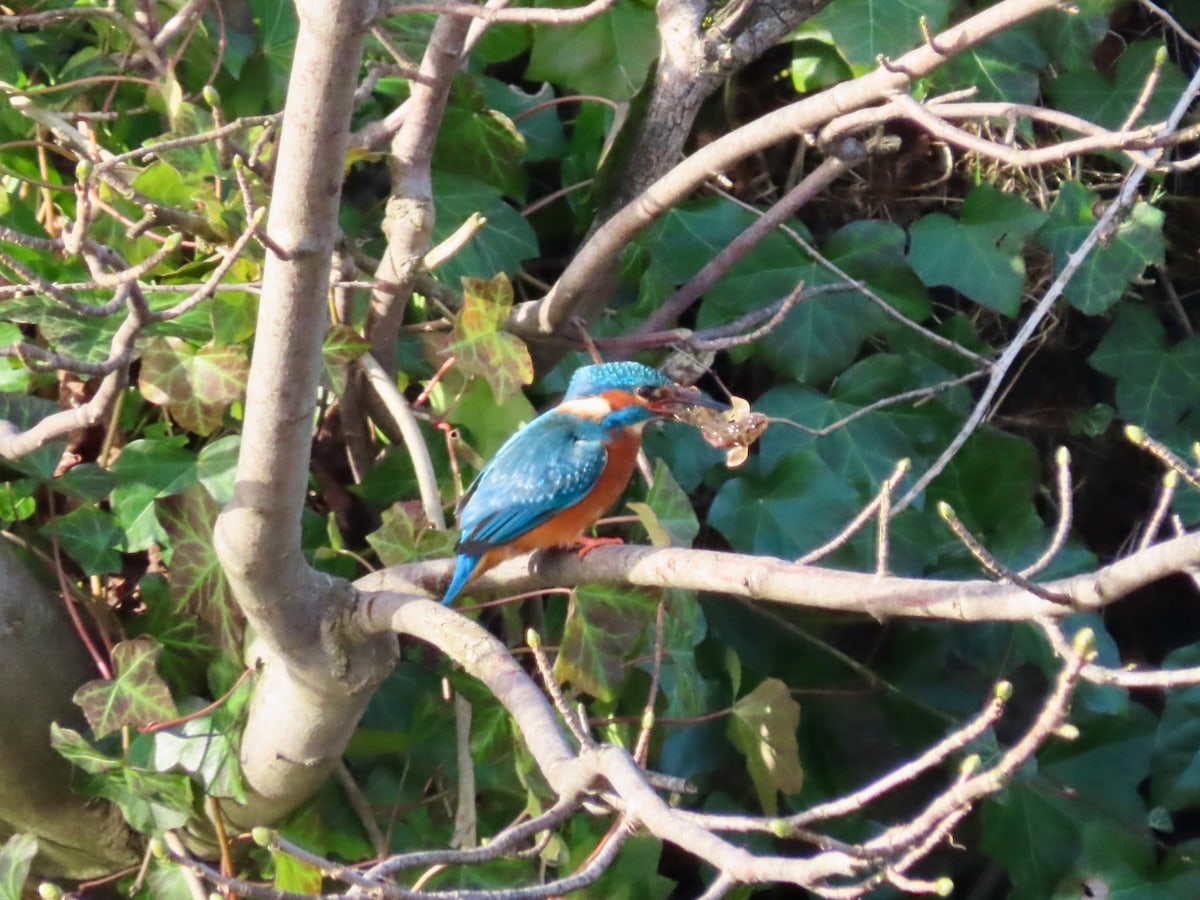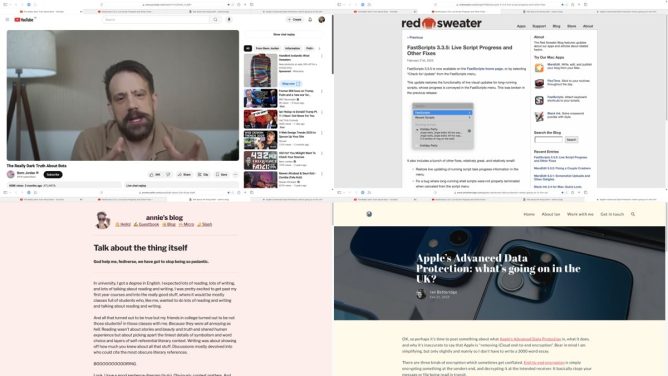Read The Drop & The List by Mick Herron ★★★★☆ 📚
I enjoyed these more than most of his books, and they fill in some backstory to the slow horses.

Read The Drop & The List by Mick Herron ★★★★☆ 📚
I enjoyed these more than most of his books, and they fill in some backstory to the slow horses.
Read: Half of a Yellow Sun: Chimamanda Ngozi Adichie ★★★★★ 📚
First half about fairly privileged folk, second half how the horror of Biafran war played out.
Everything was moving so fast. He was not living his life; life was living him.
I am still posting using WordLand from time to time. Dave Winer opened the service to everyone, on Friday. I’m reading round it as much as I can:
Aziz Poonawalla wrote a review to which Dave responded.
Andy Sylvester gave it a try, posting a video of his first use. Andy is thinking aloud, a process I always enjoy watching others do.
Manton noted:
its own RSS feeds outside of WordPress. The feeds have both HTML and Markdown. So you could build platforms (like Micro.blog!) that aggregate user feeds.
Manton Reece
Which points to the idea your blog could be, without the WordPress bit, an RSS feed that can be piped everywhere. For example: It could go to micro.blog and then be pushed on to lots of other places.
It has surprised me that WordPress does not have a bigger range of ways to post. I hope WordLand will start a trend. Personally I do not use one particular editor, depending on the type of post I am making.

#SilentSunday
WordLand is where we start to boot up a simple social net using only RSS as the protocol connecting users. Rather than wait for ActivityPub and AT Proto to get their acts together. I think we can do it with feeds and start off with immediate interop without the complexity of federation. I call it the feediverse. It’s not a joke, although it may incite a smile and a giggle. And that’s ok
Scripting News: Saturday, February 22, 2025
Feediverse, what is not to like! WordLand, I’ve tested for a while. Something like that might be a good fit for Glow Blogs. A simple posting interface for busy teachers. See also pootlewriter.


Warm sunny, for February, day. River running brown and high. I spent a few minutes sitting, watching a kingfisher across the river. Dived a few times and came up lucky a couple. One wee fish took a bit of subduing and was bashed off a branch a few times.
We want modern social media and public conversation online to work more like the early days of the web, where anyone could put up a blog or use RSS to subscribe to several blogs.
from: What is Bluesky? – Bluesky
I am reading around Bluesky this morning, some Glow Blogs research. This brought me up short. As far as I know anyone can ‘put up a blog or use RSS to subscribe to several blogs.’

Here are few really interesting posts I’ve found on Mastodon.
The Really Dark Truth About Bots – YouTube via rg4w (@FourthWorld@mastodon.online) – Mastodon is a tangled web indeed. Worth a listen unless you are overwhelmed by recent news.
Apple is removing iCloud end-to-encryption features from the UK after government compelled it to add backdoors – 9to5Mac from Ian Betteridge (@ianb@well.com) – Mastodon who wrote on his own blog:
And it’s worth saying again: what Apple is offering is still as good as Google, Microsoft, etc, none of which offer zero-access encryption for file storage. There are remarkably few companies that do: the only one I’ve come across is Proton, whose Proton Drive is hosted in Switzerland, subject to Swiss privacy laws, and zero-access encrypted by default. If you’re currently using Advanced Data Protection for file storage, they are worth a look.
from: Apple’s Advanced Data Protection: what’s going on in the UK?
I am not a user of Apple Advanced Data Protection myself. But this is interesting from the tech/politics pov. And we don’t know when we might need a bit more encryption & privacy.
FastScripts 3.3.5: Live Script Progress and Other Fixes – from the horses mouth: Daniel Jalkut (@danielpunkass@mastodon.social) – Mastodon. FastScript is one of my very favourite mac application. It allows me to do lots of things fast. Limited only by my own lack of skills with AppleScript & shell.
Talk about the thing itself – annie’s blog via bradenslen (@bradenslen@indieweb.social) – Indieweb.Social
Lots of very smart stuff about introducing technology to people.
When I introduce you to my friend, I don’t say: “This is Angela. She’s made of bones that connect to each other with cool joints so she can bend her skeleton. On top of the bones, she’s got muscles! And then there’s skin, which is the part_ _you see now! The skin is important because it holds everything together and lets you interact with Angela without being all grossed out.”
I say something like: “This is Angela. I know her from college. She’s into geology, like you.”
I’ve spent a fair bit of life introducing technology to pupils & teachers. Especially with the latter I’ve made the mistake of wanting folk to understand and love something the way I do. (RSS for example).
Read: Smoke and Whispers by Mick Herron ★★★☆☆

#SilentSunday